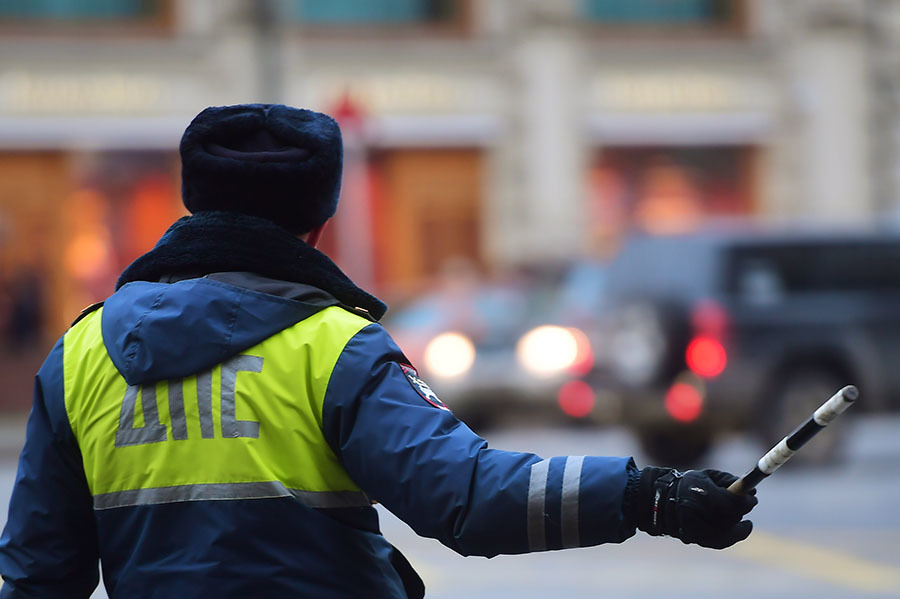A new system for intercepting and tracing vehicles will soon work in the Central Federal District (CFD). Another 16 regions of the district will be connected to the complex already operating in the capital and the Moscow Region, RT said in the Moscow Center for Traffic Management (DPC).
“As a pilot project, in 2020 a unified end-to-end system for intercepting and tracing vehicles in the Central Federal District will be created,” the press service of the data center said.
As explained in the organization, the system, the implementation of which will take about six months, will unite 16 regions and more than 5 thousand photo and video recording complexes. This will automate the interaction of operational services, increase crime detection and reduce the number of hijackings and accidents.
In addition, the work of the complex will help to control international and intercity carriers, get full analytics of the movement of cars in the Central Federal District, track freight transport, and identify dangerous drivers.
Recall that since 2016 in Russian traffic rules there is the concept of “dangerous driving”. According to the current legislation, this behavior consists in “repeatedly performing one or more successive actions”, which created a danger to other drivers moving in the same direction and at the same speed.
However, despite the introduction of the term in traffic rules, the punishment for dangerous driving in Russia has not yet been approved. In the early stages of the discussion of the initiative, it was assumed that drivers would have to pay 5 thousand rubles for this violation.
Speaking about the advantages of the system introduced in the Central Federal District, the data center noted that in most cases criminals use vehicles. As indicated in the organization, Moscow has one of the most effective photo and video recording systems in Russia, which includes more than 2.5 thousand cameras, makes up to 100 million fixations per day, more than 80% of the materials are processed by neural networks.
“Over the past four years, the use of photo and video recording systems has helped to reduce the number of hijackings, since 2010 their number has decreased by 3.5 times,” the data center said.
Commenting on the pilot launch of the system in the Central Federal District, the head of the Russian Federation of Car Owners of Russia Sergey Kanaev expressed the opinion that for the full effectiveness of the complex, its action must be extended to the whole country.
“If it operates in any one region, then no one bothers (for attackers. - RT ) to drive a car to another region,” the expert pointed out, citing the tracking of stolen cars as an example.
However, he admitted that, depending on the region, the response rate of the system will vary. The interlocutor of RT added that gradually the complex will begin to operate throughout the country.
“This is, let's say, the near future. Now the Central Federal District, because the Central Federal District is ready for this. Further Northwest, South, Volzhsky and so on will join, ”Kanaev suggested.
- RIA News
- © Evgeny Odinokov
At the same time, according to the expert, the spread of promising digital systems should not mean that the old areas of control are becoming a thing of the past.
“When we first reduce the traffic police and then introduce automated systems, then there is simply no one to service the cameras that are, and the data that comes in. Not enough people, and we say that we need more cameras and fewer employees. The new direction should be developed, but the old direction should not be destroyed, ”the expert concluded.
In turn, Igor Morzharetto, partner with the Avtostat analytical agency, also believes that the system should be extended to other regions.
“When the system works within the same region - the border of the region and that’s it, then walk freely. Of course, we need a certain federal system, first extending to several regions, and then to the whole country, ”the auto expert said in a conversation with RT.
He also suggested that in the future such automated systems will increasingly enter into the daily life of people.
“Big brother” is watching us more closely, and on this occasion you can get upset and tear your hair on your head as much as you like, ”stated Morjaretto. - Electronic systems and digital networks will cover the whole world. There are more and more cameras. This is a given, from which we can’t get anywhere. ”

